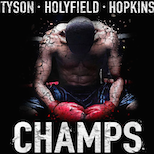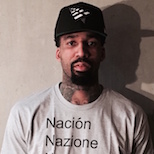“Doin’ It In the Park” – Bobbito Garcia Talks About His Pick-up Basketball Doc
06.12.2012
SPORTS
Filmmakers Bobbitio Garcia, aka Kool Bob Love, and Kevin Couliau have been breaking ankles and scorching rims on the playgrounds of New York City for years. So when Garcia, co-founder of basketball magazine Bounce, approached the French photographer in 2010 about teaming up to create a documentary chronicling the rich tradition of the street game they love so much, it was a no brainer. After two grueling summers of putting their skills to the test against Gotham’s finest ballplayers, incorporating guerilla tactics to navigate to the 700-plus blacktops on their bicycles throughout the five boroughs, the duo released Doin’ It In the Park: Pick Up Basketball in NYC last month to rave reviews.
The film features interviews from the legends, who made the concrete jungle game infamous across the globe– from Hall of Famer Dr. J to retired NBA All-Stars Kenny Anderson and Kenny Smith to streetball legends like Fly Williams, Smush Parker and Corey “Homicide” Williams. From Paris to NYC, Life +Times recently sat down with Couliau and Garcia to speak on the significance of their journey and the need to document the history and cultural impact of pickup basketball in the Big Apple.
L+T: Doin’ It In the Park resonates with so many people, on many different levels, not just basketball. What was the premise behind creating this film?
Bobbito Garcia: In the 1990’s I had a concept to do a documentary, but I just didn’t know who to do it with. I didn’t have the wherewithal, but I always had it in the back of my mind that I wanted to do a doc about pick-up basketball in New York. Kevin Couliau and I have been friends since 2004, collaborating with Bounce Magazine and his photos. I saw Heart and Soul of New York City, which he directed and created for Red Café, and I was blown away. That was the point when I said ‘Okay, I want to do a documentary in 2010. And that’s my dude.’
Kevin Couliau: Bob and I have been friends for the past eight years. He had this idea about a documentary, originally about the game of twenty-one, so he contacted me to be co-director with him. That’s how it all started. I was just getting out of a job as a marketing manager in France, and the company I was working had gone bankrupt, so I left. I had a free summer in front of me and went on this crazy journey with Bobbitio in 2010.
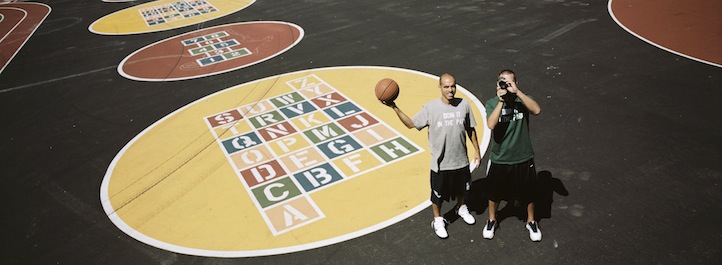
L+T: Kevin, what intrigued you most about signing on to this project?
KC: As a foreigner, and a basketball addict, I was trying to watch every documentary, read every book that is about New York streetball and basketball in general. The thing about New York streetball is, you could never find a book or website that would tell tourist where to play. If you just know about West 4th street and Rucker Park, which are the two most famous parks, how are you going to find the other playgrounds? If I’m a tourist down in Brooklyn, and I don’t know of any playgrounds in the area, where should I go to play? That was the whole idea behind the documentary, to showcase the whole culture. No one has done it before.
Bobbito: This is the first film ever about pick-up basketball. That’s incredulous to me.
KC: And to be specific, it’s not about tournament basketball, because there are so many documentaries about the Rucker, West 4th and Dyckman.
L+T: What was that journey like, venturing out on your bikes, everyday, rain or shine, to shoot this? How were you received at first?
Bobbito: Well to ask me what it’s like to be on my bike and playing ball? That’s what I do on the regular. [Laughs] What is it like to do that and do a film and have equipment in our backpacks? We went to 180 courts, in 75 days, over two summers. It was just Kevin and I. Like, I had release forms and a boom mic and Kev has his Canon 5D and the clap. It was bugged out.
KC: We spent three months playing basketball and cycling, everyday. Especially on the weekends, we would film from 9am-10pm or even to midnight. Weekdays, a little bit less, three to five hours per day. But, we’re both basketball players and that was the whole point of the journey, so we can make a movie, play basketball and meet people.
L+T: It must have been an arduous process, day in and day out?
Bobbito: It had a toll on our bodies. No one has asked us about this yet, but I couldn’t play ball for three weeks after the summer, because my foot was injured. Kev had a groin injury from the bicycle, playing ball and filming. It was grueling. Props to all the production assistants that assisted us at certain spots, but for the most part it was just Kev and I. It was a beautiful journey. If the film never comes out, we still had fun. [Laughs]
KC: The only obstacle –besides the weather and distance sometimes– was the [Verrazano] bridge to go to Staten Island. [Laughs] It was the only borough that we had to take a car. We didn’t go to Staten Island with our bikes– we could have, but chose not too.
L+T: How important was it for the two of you to actually be a part, not just to write, direct and produce, but to also to play in these games and connect with the people?
Bobbito: There wasn’t an interview that we did, that I could remember, that we didn’t play ball afterwards. You know, that’s standard. We’re ball players first. The important thing for us was that the film was made from people within the community. Most times documentaries are made from outsiders who do the research and then do the film. So by playing ball, I’m hoping the film inspires people to play more or pick it up or pick it back up.
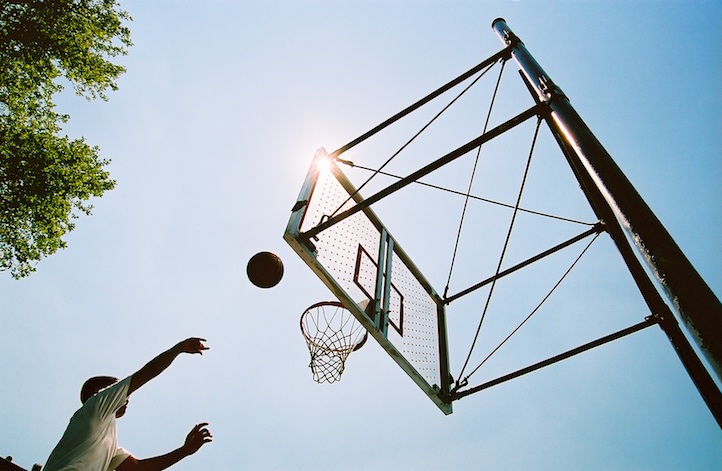
L+T: I assume that rolling through the five boroughs, certain neighborhoods were friendlier than others?
Bobbito: Yes! Brooklyn was always a difficult one for some reason [Laughs]. I don’t know why, but every other borough was made love, but in Brooklyn we had to get the approval of the local street cat, like ‘Oh yeah, y’all cool. You can go ahead and film.’
KC: Don’t go to Dean Street in Brooklyn. Seriously, one guy slapped my camera because I was filming him. I mean, with New York City streetball, you should have confidence in your game, wherever you go– even if it’s in a tough area. Just be sure to be careful and not to go at midnight. But seriously, sometimes I feel safer in New York than I do in Paris and other cities in the world. The toughest thing is the language barrier, because the expressions and slang is different. It also helped a lot that Bobbito and I are decent, not good, but decent ball players. It helped us gain the respect of the guys on the court.
Bobbito: Luckily, a lot of people recognized me from NBA Street to ESPN’s It’s the Shoes or MSG’s Summer Ball and from different tournaments I’ve played in, so we got love everywhere we went.
L+T: How were you able to incorporate all of the streetball legends and some of the NBA players?
Bobbito: We interviewed 60 people and only 20 people made the final cut. We caught Dr.J [Hall of Famer Julius Erving] at the Converse commercial. We were just guerrilla. We heard Dr. J was in Brooklyn; we just went to BK and crashed the commercial and was like ‘let’s see what happens.’ We just had a lot of good will on our side. There are too many moments, but I would say the toughest moment was in the editing room. David Couliau, Kevin’s brother, was the cat that cut the film and I can’t even tell you how many versions we went through. David really deserves a lot of credit for the rhythm of the film and its flavor.
L+T: What was the most special moment throughout the two-year span?
Bobbito: I would say the most special for me was the hearing impaired players and also when we went to Rikers Island. To me, when envisioning the story, it’s a shame that the United States is the leader in the world for incarcerated population. I know how much basketball means to inmates. I’ve played on Rikers a couple of times. Games that were the correction officers against the inmates, and I wanted to show their story. And also at the same time show people how fortunate they are to play ball whenever they want. Cats in Rikers can only play ball once a week and they’re still nice. The inmates were happy that they got the chance to play ball for two hours, while we were filming.
L+T: You recently began screening the film at playgrounds and recreation centers in New York. How have the reviews been thus far? And what are some of the other states and countries where you will be screening?
Bobbito: The film is blowing people away and I’m so thankful for the response. Every time we do a screening, I get so nervous cause I’m like ‘What if people don’t like it? What if they don’t laugh?’ But the response has been overwhelming. I hope the film gets to a lot of countries around the world and really introduces them to this whole world that happens in New York City that so beautiful and undocumented.
KC: We’re trying to make it global. We’re doing a French, Spanish and Mandarin version of the film, as well as a 52 minute version because right now it’s 85 minutes. All the kids from around the world, who want to discover New York City streetball, they’re all online, so we’re going to put it on iTunes, Amazon, wherever we can put it online and on the playground. We’ll be showing in Los Angeles, San Francisco and Oakland, and next year will have one in Africa. We’re currently negotiating to do screenings throughout Europe. We like to do most of our screenings outdoors, on playgrounds, to keep the authenticity of the film and impact ballplayers all around the world. So, we’ve organized community screenings and charity tournaments.
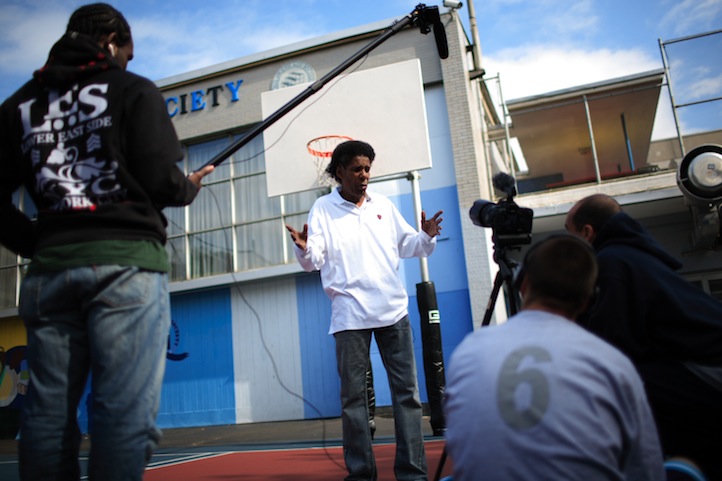
L+T: How has New York City streetball impacted the game of basketball worldwide?
KC: New York has such a big influence on the world. We know kids from Spain to Japan…we have like five or six friends from Japan who came only to New York City to experience streetball. Those guys are from the opposite end of the globe and they’re not moving to Chicago or Miami to experience basketball. So that proves that New York is the epicenter of the streetball and playground culture.
L+T: Chicago would probably disagree with you.
KC: Chicago is still a great place, but it’s just a different philosophy over there. I guess there will be a documentary about pickup basketball in Chicago as well, but the other things is, I don’t think Chicago has 700 playgrounds like New York has. They maybe have 150-200, maybe more on the Southside. I don’t know. But so far, New York is the Mecca.
To find screening locations and times, visit the documentary’s page Facebook page.
